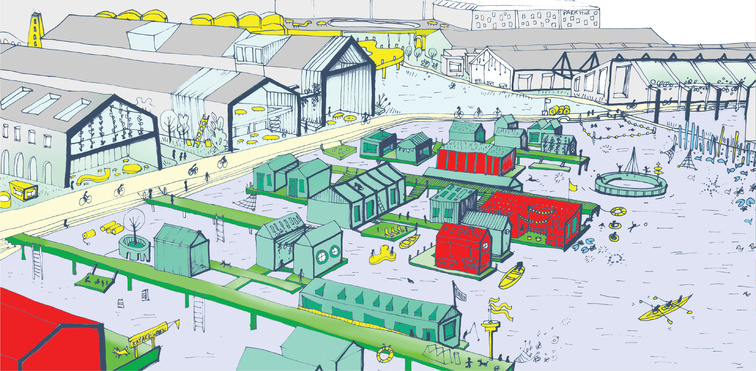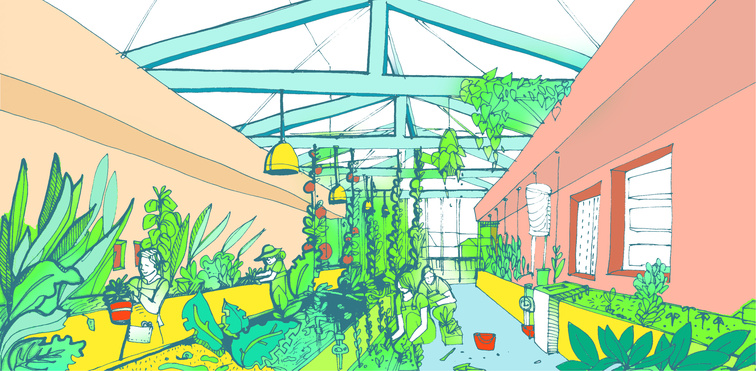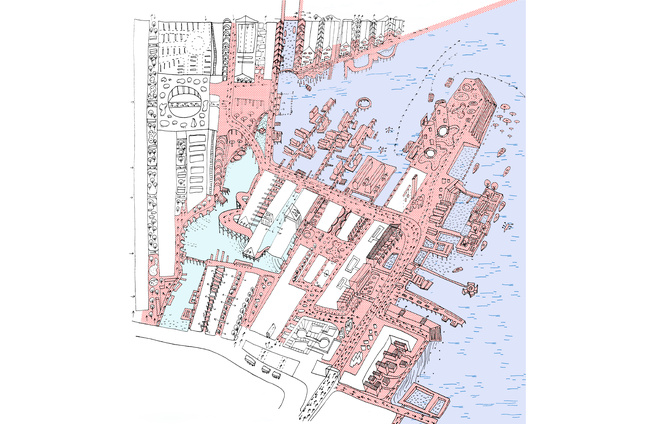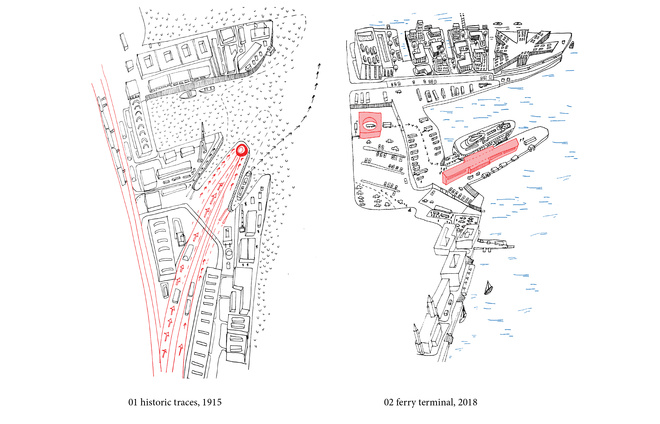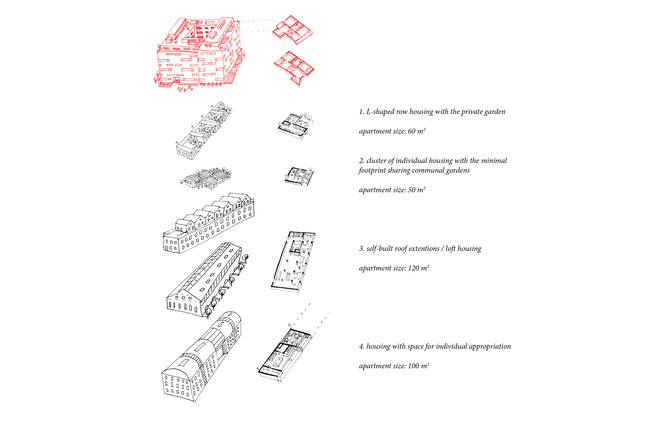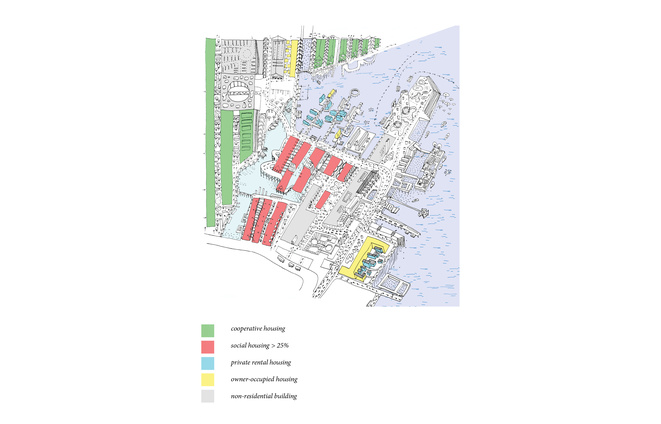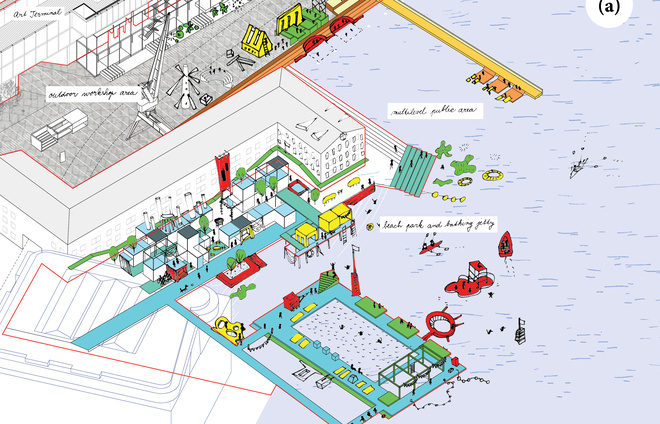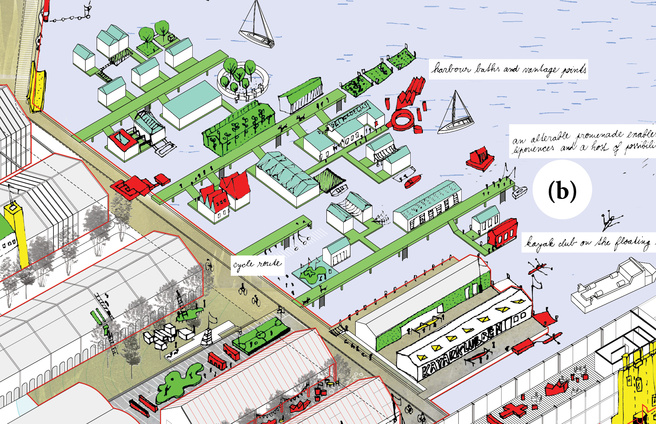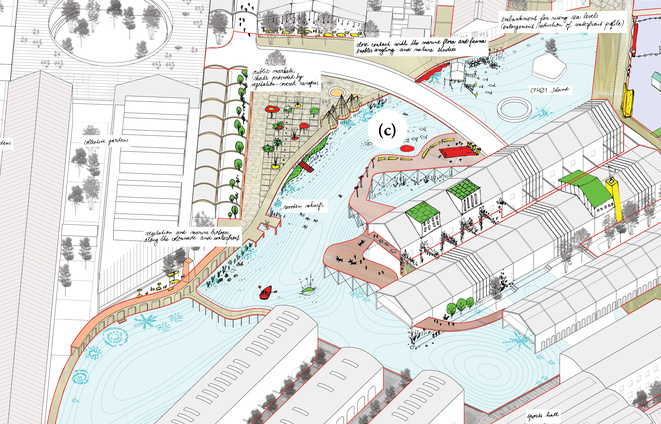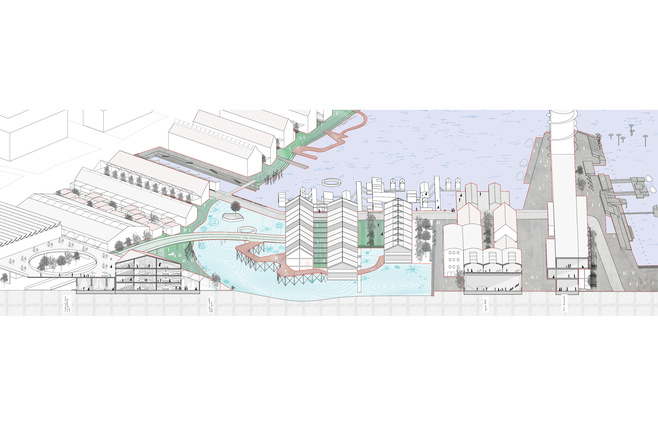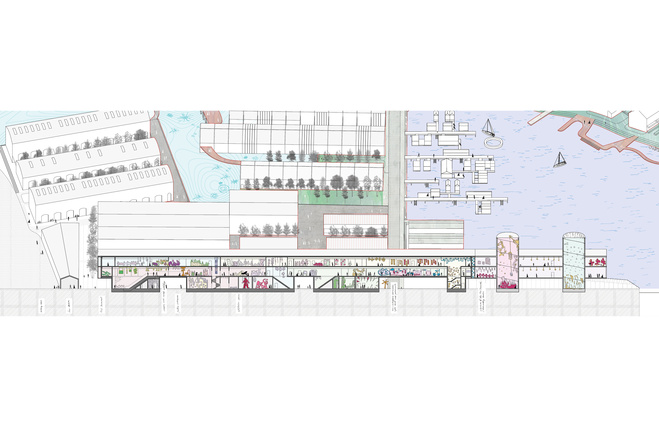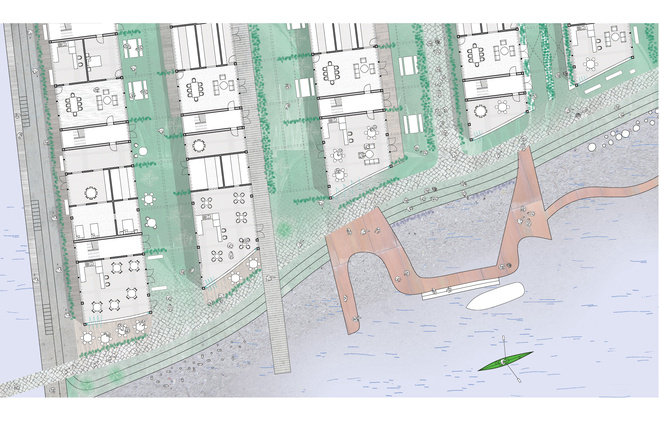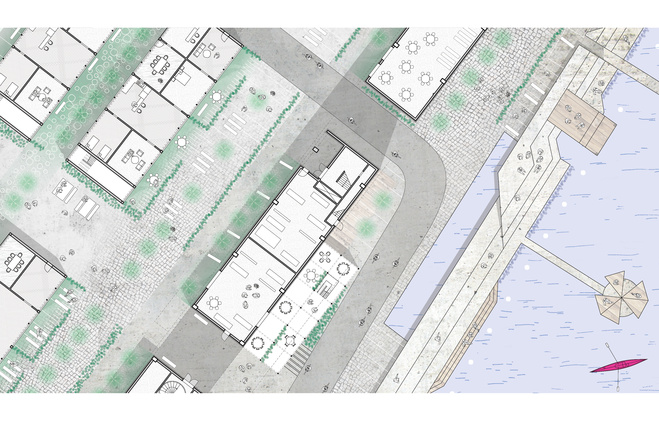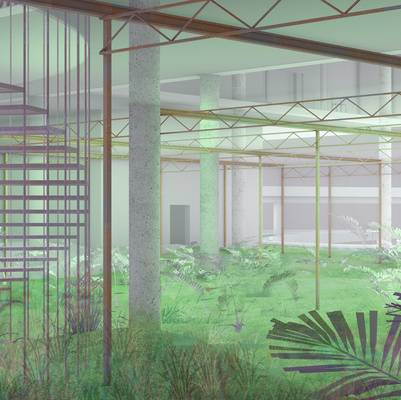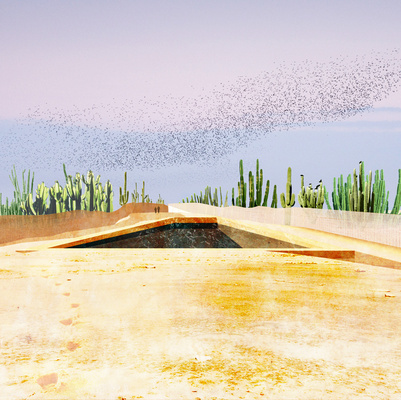Harbour Renewal
This project is a proposal for the transformation of the Junkspace of the DFDS Terminal in Søndre Frihavn into a lively residential district. It is mainly a spatial project oriented to maximize public access to the waterfront.
Water has a very strong importance in Danish identity
Project is inspired by the power of the element of water and the central value it has for Denmark as a nation. Water is deeply engrained in Danish identity and history. A nation of traders and a naval empire, Denmark has developed thanks to the water. As I see it, water is the element that connects Denmark with the rest of the world. When I conceived this project, I was playing with the idea of water as an element that connects, that brings people together.
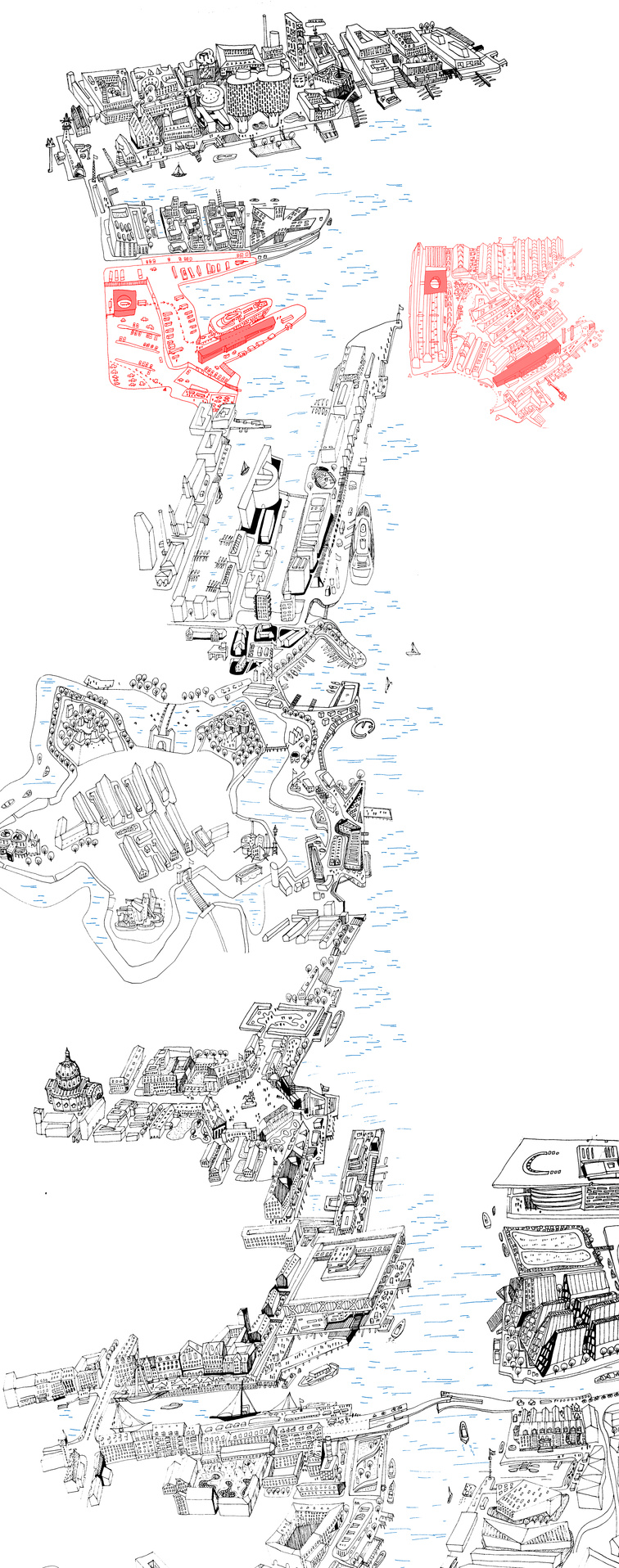
1. CONTINUITY
THIS PROJECT deals with the missing link in the harbour front line of Copenhagen. It seeks to eliminate the existing gap created by the Junkspace of the DFDS Terminal and to harmoniously integrate this area with the newest developments.
2. PUBLIC ACCESS TO THE WATERFRONT: a. The main strategy consisted of assigning the totality of water-edge area to public space, creating what could be defined a “hyper-activated” sequence of waterfront spaces. b. In addition to that, I decided to expand the waterfront beyond the existing edge. By placing a wetland as a different type of waterfront inside of the district, I realized I could increase the water edge surface.
3. PRESERVATION OF HISTORY AND DENTITY: The proposal follows the historical disposition of the site (1915) and preserves the existing structures of the terminal buildings by reorganizing their interior and creating the new art and cultural venue.
4. BLUE AND GREEN CITY: The water is a key part of the everyday life in the new district. It features all sorts of water activities: from swimming in the morning, sailing to the work, kayaking to a collection of recreational pocket parks. Thanks to the wetland, the entire area will have a richer fauna and flora.
5. DIVERSITY and SOCIAL INCLUSION: a. One of the aims here is to deliberate design by reducing the overall buildings cost by simple construction system which enables a rich variety of options for the organization of various users. The idea is to give the opportunity for self-expression and individual appropriation of the housing by residents or usage of the cheaper industrial materials. b. Mixing ownership: I am suggesting enhancing the social and cooperative ownership models to include all social groups. Specially, to give opportunity to populations that will be periodically renewed, such as students and artists.
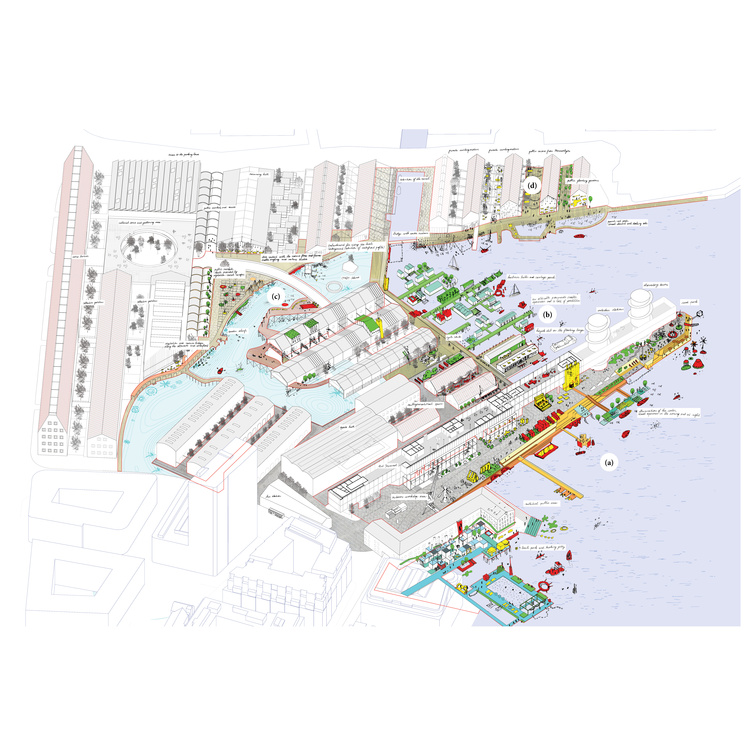
(a) The promenade around the Art Terminal constitutes the most prominent public space on the waterfront. Here we can observe the external artist’s workshop and the exhibition space to display the work of local artists (1), the cafés and art shops (2) , the aquatic playground (3), the marine observation unit (4) and the wind park (5).
(b) “Green” and “blue” values: A configuration of multifunctional boathouses (cyan colour) and waterfront facilities (red colour) bring users in close contact with the water. The waterfront facilities include a winterbathing and kayak club, storage for boats, and a rooftop viewing terraces for residents and visitors. (Perspective view is from the Terminal Observatory Towers.)
(c) Rainwater collection: A wetland is a promising way to cope with the difficulties associated with climate change. At the same time that it collects clean water, it increases the quality of life. Placing a diversity of pocket parks and recreational spaces along the contour line of this wetland will foster a multiplicity of views and allow many points of direct access to the water.
(d) A community green-house: The green qualities of the waterfront are continued in the space between the buildings. The idea is to use wintergarden extentions as a way to enhance and diversify the community life.

